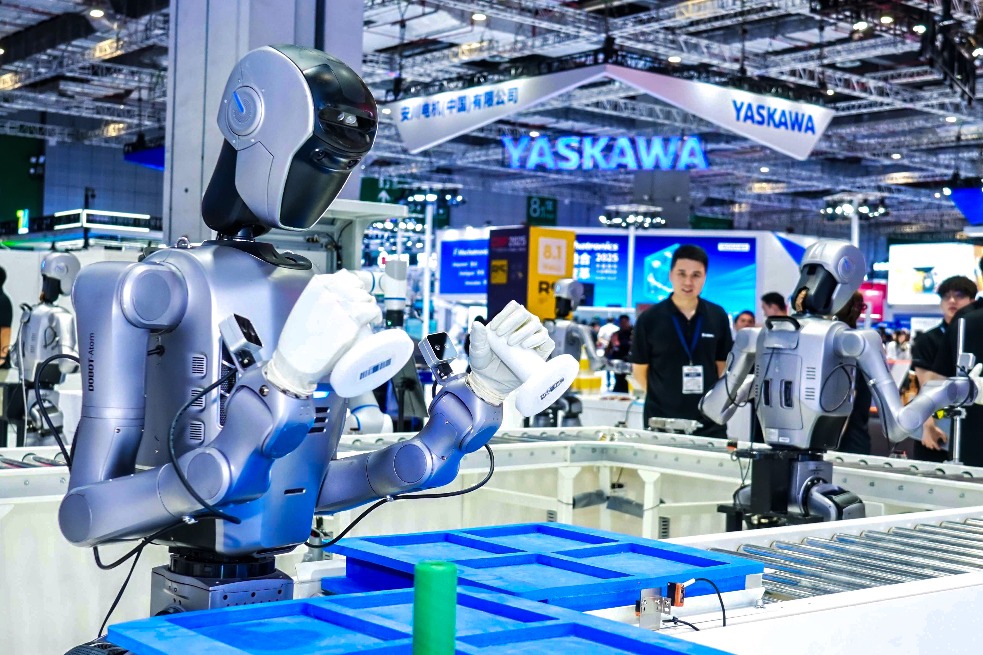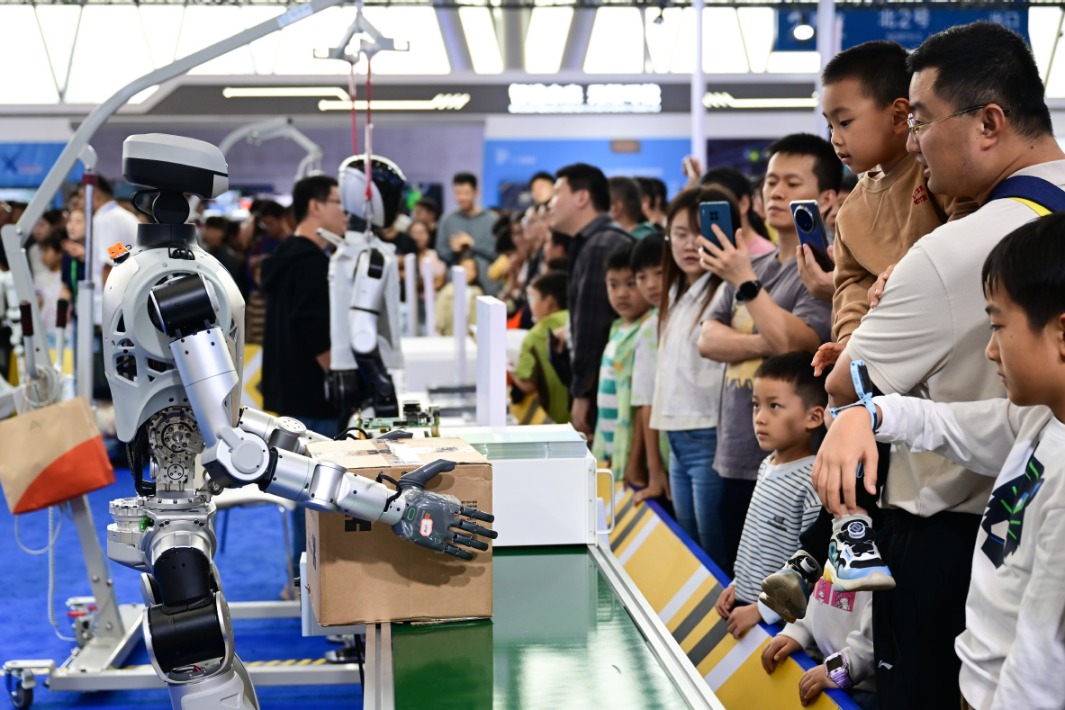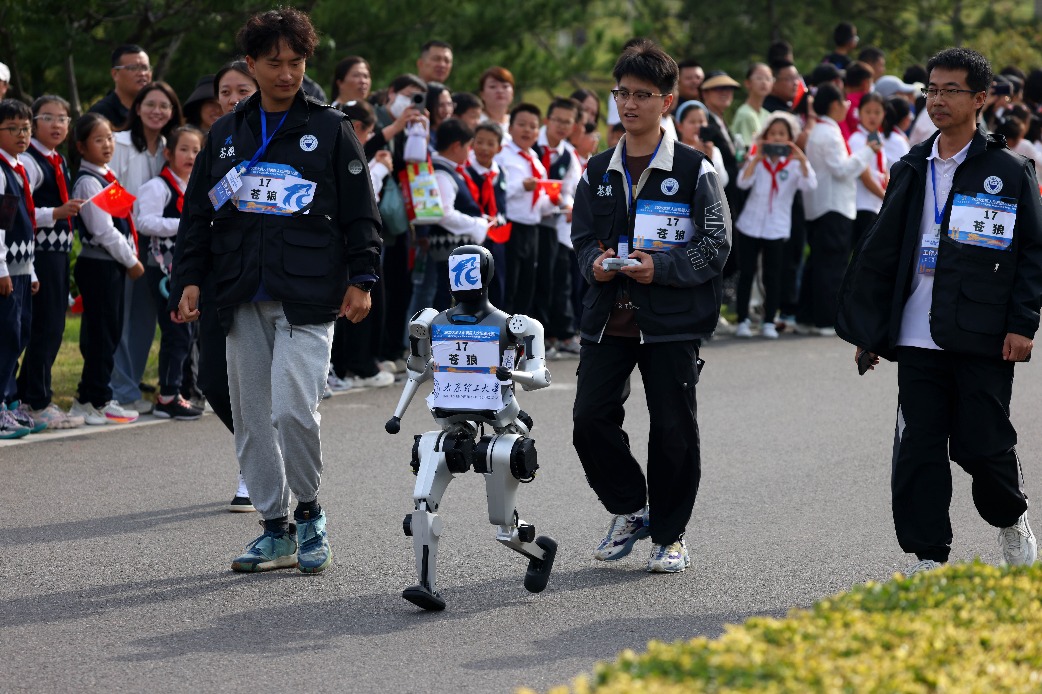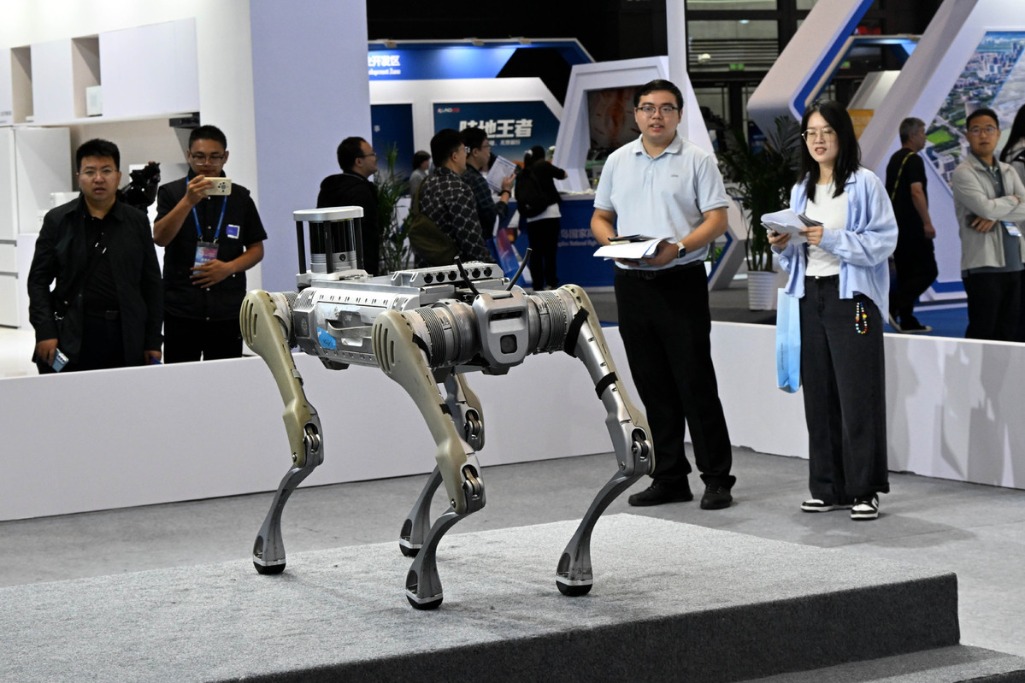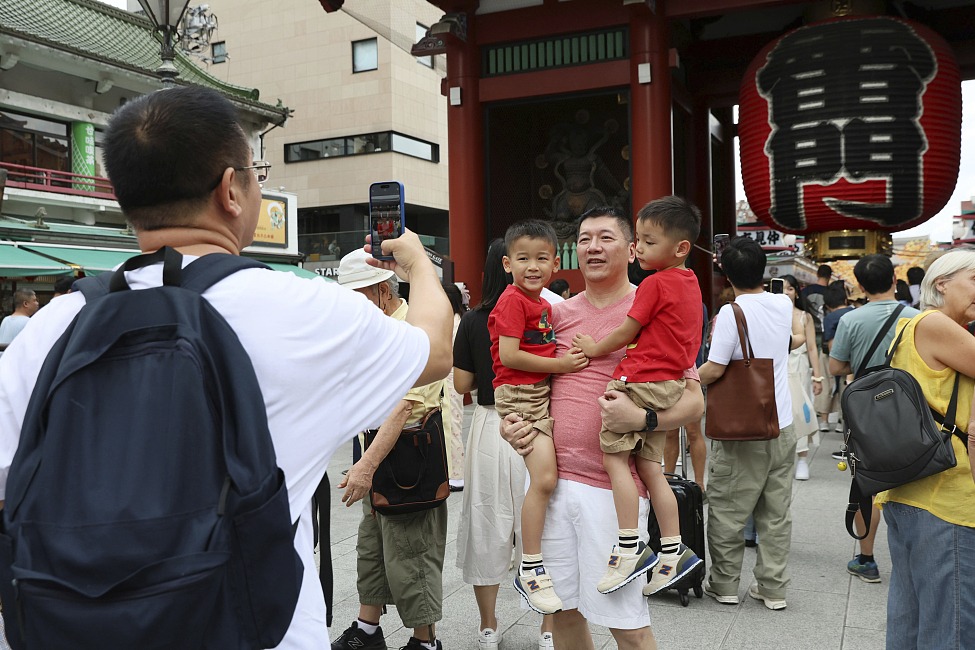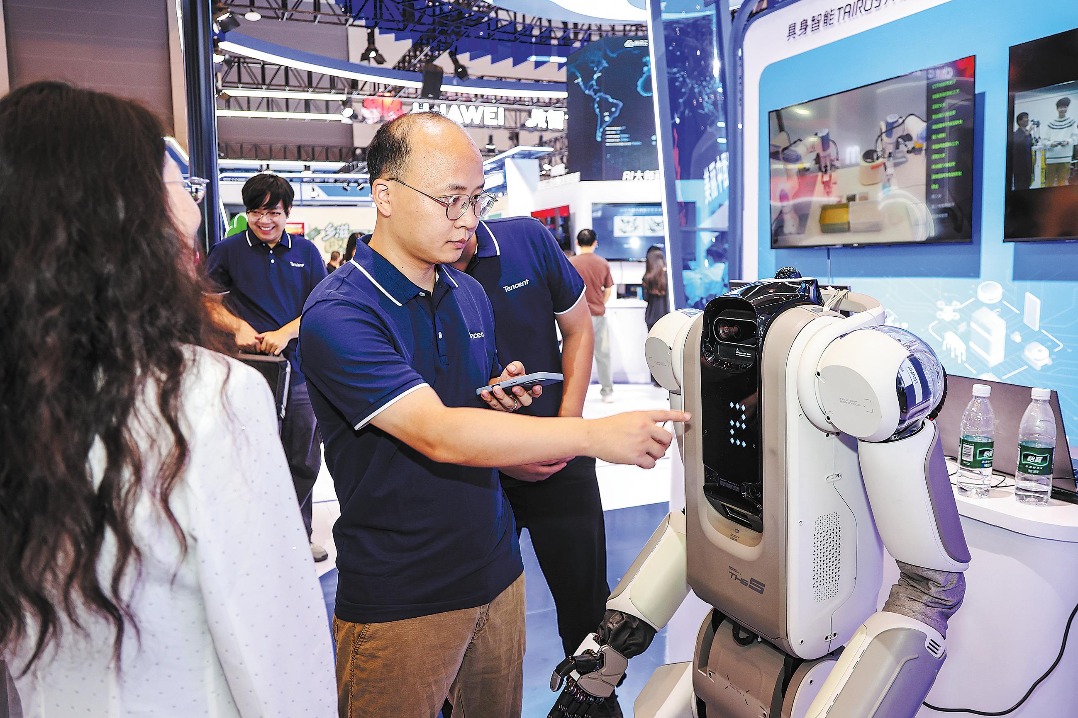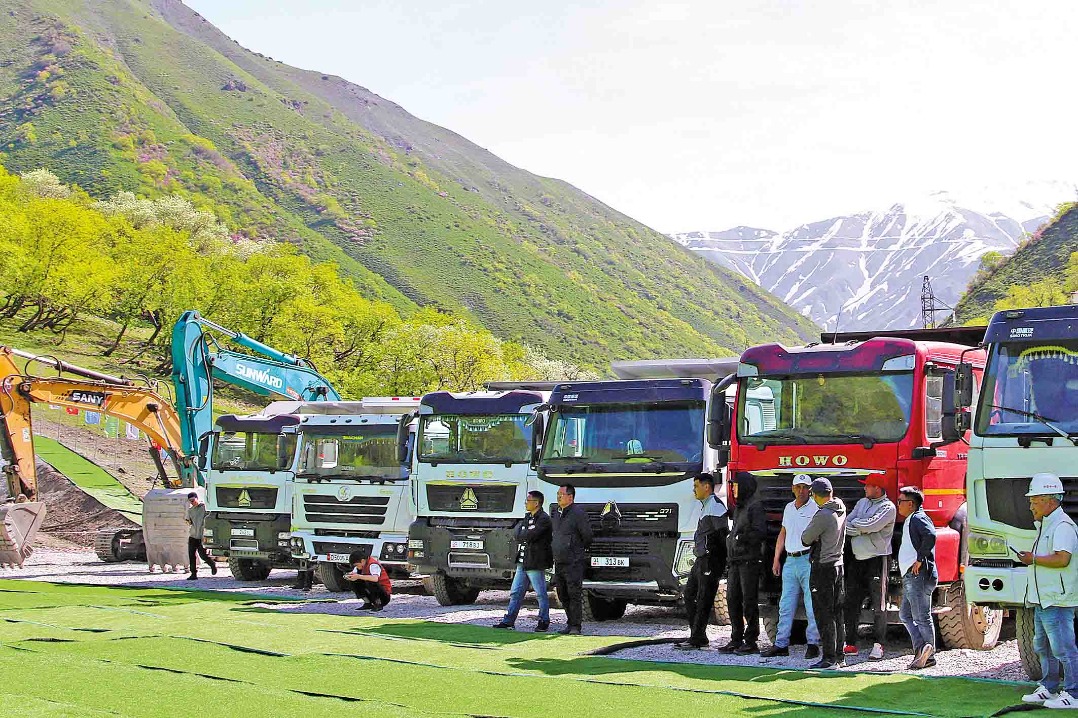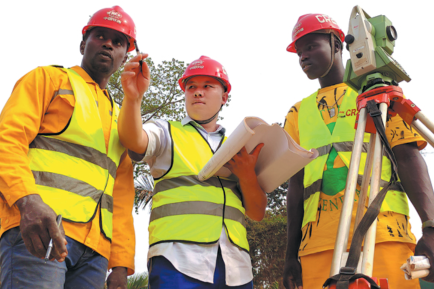China's humanoid robots speed into reality
By 2045, nation to have over 100m such machines deployed across industries, with total value of some 10 trillion yuan

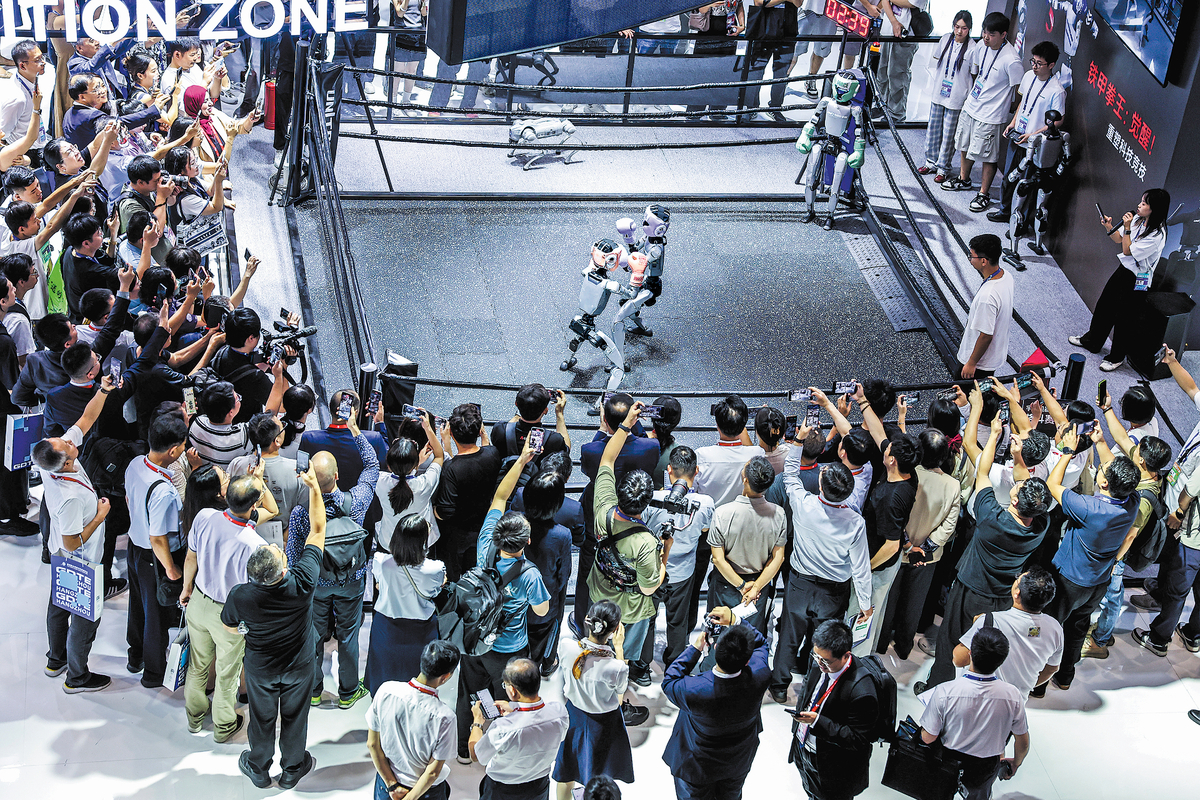
BEIJING — An evolution driven by data is quietly unfolding within China's robotics landscape, one that is expected to transform the fabric of daily life.
At a busy training facility in the western suburbs of Beijing, 1.66-meter-tall humanoid robots were using virtual reality and motion capture systems to learn practical skills like warehouse tasks, material sorting and product packaging.
This scene, far from a mere tech showcase, captured a critical evolution in China's robotics sector — the transition of humanoid robots from executing laboratory stunts to learning practical skills in "vocational schools".
The robots, which are named Kuavo — developed by Leju Robotics — are fast learners. They have already achieved success rates of over 95 percent in practical tasks such as returning empty crates, sorting materials, as well as weighing, packing and boxing wares.
This pragmatic approach is key to unlocking these robots' effective use in real-world applications — from auto manufacturing to logistics — and accessing a trillion-dollar market.
A think tank report forecasts that by 2045, China will have over 100 million humanoid robots deployed across industries, creating a total market value of approximately 10 trillion yuan ($1.4 trillion).
Competing in this massive market, however, still faces technical hurdles. While viral videos of robots performing acrobatics or intricate dances have captivated the public over the past year, such a display of technical mastery obscures the underlying challenge of deploying robots in unstructured, unpredictable everyday settings.
To bridge the data shortage, Chinese robot makers are getting their machines into internships in automotive plants, warehouses, eldercare facilities and even a theater school.

















